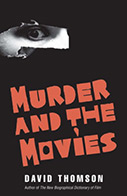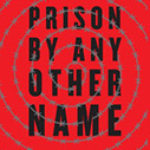Murder And The Movies

Author: David Thomson
Publisher: New Haven, CT: Yale University Press, 2020. 232p.
Reviewer: Lars Ole Sauerberg | November 2020
The first written statement on the appearance and function of evil in the dramatic arts is to be found in Aristotle’s treatise on poetics from about 300 BCE.
It is the passage on the cleansing – “catharsis” – of feelings by vicarious experience of evil by the audience watching a drama.
Exactly what Aristotelean cleansing means in psychological and social terms has been the subject of much discussion over the almost two and a half centuries since then, or, rather, since the Renaissance, when Aristotle’s treatise re-appeared after centuries of neglect in Western thought.
But since the heyday of Greek drama and its following by Roman and Renaissance theatre there has been no dearth of violent death, bloodshed, and mayhem in general on stage, followed by movies since the screen art started a good century ago.
David Thomson, a leading American film critic with English roots, estimates that a person like himself in her or his seventies, will have witnessed more than 150,000 violent deaths on movie and TV screens. The question is, then, how does the audience react to this mass slaughter? There seems, generally, to have been two competing theories about this: the one follows Aristotle claiming emotional cleansing by vicarious action, which is emotionally charged passivity, whereas the other suggests growing emotional numbness, even to, and beyond, the point of direct encouragement of violent behavior.
No one has been able to prove either one or the other. Nor is this what David Thomson sets out to do. However, based on his outstanding knowledge of film history and aesthetics, he traces lines and characteristics of murder and other kinds of violent death represented in movies. The only thing he states with certainty is that the level of violence has risen considerably over time. As the author puts it: “If you’re old enough to have a sense of what fear meant in 1945, then you have to admit that the broad sweep of film history has taken on a mounting stress that could leave your grandparents stunned, and even less inclined to have faith in life” (p. 110).
Even as Thomson acknowledges the growth of cruelty on the screen, and links this to the murder rate and the growing frequency of mass killing, such as school shootings, in the USA, he also casts his net wider than movies in the traditional sense. With the development and impact on everyday life of digital culture, notably in violent video games, it has become so easy not only to witness death, and with high scores at that, but also to inflict it with a simple and tiny movement of a finger in a relaxed sitting position. Although not included by Thomson, one cannot help thinking of the long-range operation of drones, in reality and represented in a movie like Eye in the Sky (released 2015).
Focusing on violent death in the movies in a historical perspective, Thomson is intrigued throughout by the Aristotelean catharsis problem. As he soberly observes, “[t]he Titanic may sink, but we’ll stay dry” (p. 49). Given the screen presence of drama and fake violence enacted on film sets requiring ingenious stunts and special effects caught first on celluloid film and nowadays broken down into ones and zeroes in the memory bank, there remains the question of what screen-represented violence actually does to the audience. Aristotle’s catharsis having been interpreted in different ways, there is no authoritative pronouncement on the psychological response from or generally cognitive effects on the audience of on-screen violence. But there seems to be various recurring reaction patterns.
One characteristic of those who do evil on screen is that they tend to be victims of poetic justice eventually, but until then, they more often than not invite to audience-bonding in terms of empathy. In his comments on the Norwegian director Erik Hoppe’s movie treatment of the Anders Breivik massacre Utøya-July 22, Thomson observes that the “pulse of movies […] is strangely kind to villains and murderers” (p. 200). Writing about war movies with their mass deaths, Thomson admits to a commonplace “truth” often encountered in reader/audience-response psychology amounting to the proposition that “[w]e like to think we are “involved” and in sympathy with what we see” (Thomson’s quotation marks) (p. 82). Then again, the difference between screen activities and audience response is absolute: “But we are safe, reflective, and rather cold. It would be so different if the men on screen stepped forward, their flamethrowers scathing our eyes” (p. 82).
In a comment on the smashing of cars on film, Thomson suggests an audience response to the tune of the “thrill of liberated response” (p.29). But the thrill is not the stopping point, when we begin to consider vaguely delineated and overlapping representational modes. Consider the aftermath of the Kennedy assassination in 1963, developing “part of a mounting fictional tumult in which we faced the disappearance of certainty” (p. 148). On-screen murder, whether movie fiction or documentary fact seems to have developed to a “possibility and an atmosphere and a terrible mood in which lost individuals might register their existence and how they felt overlooked” (p. 148). Perhaps this, very likely sustained by the Hannah Arendt-inspired observation on the “ordinariness of murder” (p. 129), means that in the last and final instance the “idea of murder is a direct signal of our destroyed politics, and in that regard the murderer has become a waiting outsider” (p. 148).
Related to both empathy-enhanced audience-bonding and to the supposedly “liberated-response” effect of watching on-screen violent action is the arguably most important dynamic in watching murder and other death-related topics in the movies — that of entertainment effect.
When an individual opts to watch a murder movie (or read {or listen to an audio-book reading of} a whodunit), this means investing one’s money in an experience expected to be positive in the sense of providing entertainment.
So the paradox addressed here is one of the repulsion supposedly caused by the representation on the screen of violent death overridden by the anxious desire to oversee its preparations, carrying-out, and effects. Usually this paradox is explained as a clash of ethics – murder and its circumstances – and aesthetics – the way it is narrated. The aesthetic level, the narrative of the murder, is what the audience looks forward to as being capable of providing the experience known as entertainment, that is something involving absorption, suspense, excitement, and, very often also, general elation. As put precisely early on by Thomson: “Our movies are a business; we sometimes like to call them works of art. But deeper down than those functions, they make a climate where impossible possibility is offered, where voyeurism is indulged and we are invited into pretty frames where space, light, happiness, and ease are mixed in with those pressing taboos, the orgy, crash, and murder” (Thomson’s italics) (p. 30). Referring covertly to Aristotle, the author manages to neatly confront the unpleasantness of life with its imaginary compensations known as the pleasure of entertainment.
Thomson circles around the pleasure or entertainment effect throughout his study, perhaps the most conspicuous trait of audience-watching-murder-on-the-screen in the cinema (or in front of the TV set or the computer/tablet/cell phone). “The invitation of the screen has always been barbed or compromised. We love life, but we gather there to contemplate death” (p. 35). Entertainment is not far from pleasure or mirth, but murder “shouldn’t be a topic for mirth, should it? Unless mirth is the last way left to awaken us to the pain and the loss” (p. 43)
Sharing his British background with Alfred Hitchcock, Thomson pays much attention to this master of the Hollywood thrill, whose Psycho (1960) he considers a landmark of murder movies. It was a film that “indicated where cinema was going, and should be going – away from censorship and into an erotic and violent candor allegedly suitable for grown-up people” (p. 73). Also figuring prominently are The Shining (1980) produced and directed by Stanley Kubrick and based on a novel by Stephen King, “one of the coldest comedies ever made, and an admission of how murder can get into our blood” (p.15), and the Godfather movies (“Doesn’t the very title – The Godfather – promise a perverse religious care for us?” (p. 99).)
We may wonder that the James Bond movies go unmentioned. After all, the (in)famous British government agent was given his double 00 to signal to those in the know (his colleagues, superiors, and cinema audiences globally) his license to kill. Thomson deals at some length with war movies and the understanding that soldiers act in their killing capacity on the orders of government. But this is different from the cold-blooded punishment meted out by the specially licensed civil servant. There we have the dilemma dealt with in Thomson’s book in a nutshell: the investment of empathy in a character who will get away with murder, although of persons clearly deserving to be removed from further harmful action to the UK/humanity, with impunity, even with both honorary and carnal rewards to boot.
Thomson’s approach is charmingly laid-back and his studiedly erratic style relaxed. He proceeds by association and intuition and often retraces the path already covered, but with added insights. The number of movies discussed or referred to is impressive. The necessary scholarship is felt as the invisible and discreet scaffolding supporting the whole structure. In other words, it is a pleasure to follow David Thomson through a century’s harvest of movies featuring what Raymond Chandler called the “simple art of murder,” and other kinds of violent death. However, as hinted at from the start, Thomson sees the mounting violence in the films surveyed as a worrying sign of a society increasingly immune to violations to life and limb. It is not only a question of the way that the depiction on screen of rape will probably “induce imitation” (p. 155), but also that a “culture of death” (p. 181) reflects the “imbalance in society and our politics. That speaks to a loss of faith in the American dream, the pursuit of happiness, and the promise that everything will be OK” (p. 181). Pared down to existential basics, Thomson resignedly confronts the screen with reality: “Murder wants to be a drastic, dramatic assertion of man’s power – but it does not heal the humbling knowledge that everyone will die in some kind of confusion” (p. 167).
David Thomson does not square the circle of murderous entertainment, but on his way through the last hundred years of murder in, rather than “and” the movies as indicated in the title, he successfully throws revealing light on the ways that representations of that hideous crime have captivated and spellbound its movie audiences.
Lars Ole Sauerberg, Prof. (emer.), dr.phil., University of Southern Denmark


